Cybersecurity is a continuous process, not a one-time task. Threats evolve, and new vulnerabilities emerge unexpectedly. Staying ahead requires constant vigilance—and one of the most effective ways to do that is through regular patch management.
What Is Patch Management?
Patch management is the organized practice of identifying, acquiring, testing, and deploying software updates—or patches—to correct vulnerabilities, bugs, or performance issues. These updates are essential for closing security gaps that could otherwise expose systems to cyberattacks. Failing to address these known weaknesses increases the risk of data breaches, system disruptions, and lost productivity.
The Patch Management Lifecycle
An effective patch management program follows a consistent, cyclical process:
1. Identify and Assess Vulnerabilities
Start by identifying at-risk areas in your infrastructure. These weak points may lie within outdated applications, operating systems, or device firmware. Routine security scans and vulnerability assessments can pinpoint these areas, enabling quick intervention before threats are exploited.
2. Evaluate and Prioritize Patches
Once vulnerabilities are discovered, review available patches. Software vendors typically release updates with accompanying documentation highlighting their purpose and urgency. Security-critical patches should be prioritized over performance or feature updates. For example, a patch blocking a known server exploit should take precedence over one that enhances user interface functionality.
3. Test and Deploy
Before deploying any patch organization-wide, test it in a controlled environment to ensure compatibility and stability. This step helps prevent unforeseen disruptions, such as system crashes or application conflicts. Once cleared for deployment, schedule installations during off-peak hours to reduce operational impact. Keep detailed records of which systems were updated and note any complications during rollout.
4. Monitor and Verify
After deployment, continue to monitor systems to verify successful installation and ensure no new operational issues arise. This includes making sure updates didn’t inadvertently introduce new vulnerabilities or interfere with other software functions.
Why Is Patch Management So Important?
Cybersecurity Protection
One of the most compelling reasons to adopt a solid patch management policy is the prevention of cyberattacks. Hackers often target well-known vulnerabilities in software that developers have already patched—relying on the fact many businesses are slow to update. By proactively installing updates, organizations can close these entry points before they’re exploited.
For instance, if a CRM system has a critical flaw and isn’t updated quickly, it could be a gateway for attackers to steal customer data or disrupt services. Timely patching helps block these intrusions.
Regular patching also deters criminals from using automated tools to exploit common vulnerabilities in popular or widely used software. Businesses that keep their systems updated are much less likely to fall victim to these broad attacks.
Regulatory Compliance
Businesses in sectors such as finance, healthcare, or e-commerce are often required by law to maintain secure systems. Regulations like HIPAA or PCI DSS mandate timely patching of software to protect sensitive customer and operational data. Failing to comply could result in harsh penalties, reputational damage, and loss of customer trust.
Performance Improvements
Although the primary focus of patching is security, updates often come with performance enhancements and bug fixes. These improvements can lead to smoother workflows, increased efficiency, and better user experiences across the organization.
Customer Trust and Brand Protection
Businesses are under increasing scrutiny to safeguard customer information. Regular patch management demonstrates a responsible and proactive cybersecurity posture. Conversely, neglecting to implement security updates can lead to data breaches and damage relationships with customers and partners.
Tools That Support Patch Management
To streamline the patching process, companies often rely on specialized tools to automate key tasks:
Vulnerability Management Tools
These tools scan networks and systems to detect vulnerabilities and prioritize areas that need immediate attention. This insight informs the patch management process, helping IT teams focus on the most critical issues.
Patch Management Software
Automated patch management platforms, such as Windows Update or third-party applications, can handle the bulk of update deployment across systems with minimal disruption. Admins can schedule patches, deploy them remotely, and generate compliance reports.
Azure Update Manager is another robust solution that manages updates across on-premises and cloud servers, tracking compliance while simplifying deployment. Its central dashboard logs software versions, missing patches, and available updates, allowing seamless coordination.
Mobile Device Management (MDM)
With the rise in remote work and mobile accessibility, MDM solutions like Microsoft Intune help companies enforce device-level patch compliance. These tools grant administrators oversight of all company-approved mobile devices, ensuring they are properly updated before accessing sensitive data.
Partnering With the Right Experts
Implementing and managing a successful patch strategy can be time-consuming and complex. That’s where Cytranet can help. As a managed service provider, Cytranet specializes in patch management, endpoint protection, asset tracking, and more. With expert support and tailored cybersecurity strategies, we ensure your business stays secure, compliant, and resilient in an ever-evolving threat landscape.
Contact Cytranet today to learn more about how our professional patch management solutions can protect your organization.
This article originally appeared on Cytranet.



